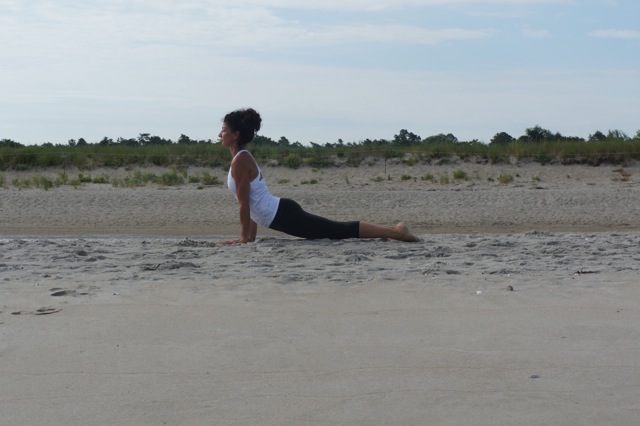
One of the things I love about teaching yoga is that you can use the same sequence but focus on different aspects of the practice. This can create a totally new experience for students, even people that have been practicing a similar sequence for years. In my work as a teacher and due to my own constant research and ongoing training, I learn so much about different aspects of the practice and love bringing them into class.
One of the harder concepts to get across to students is the idea of working in an “integrated way.” This refers to the idea of using the appropriate muscles in the pose to create a sense of balance and stability. In just about every pose, there is a part of the body that can be thought of as the “possible weak link.” Not that that part of the body would be weak per se, but it’s possible that you might sink, sit in or collapse into that part of the body if you didn’t have the requisite strength, awareness or alignment in place. 

A good example of this is Upward Dog. While you are supporting your body on your hands, you must also include action in the legs or you’ll just sink into your shoulders. Or, in Downward Dog, there’s a balance between pushing UP with the hips, BACK with the thighs and PULLING the belly into the spine. It’s a coordinated effort between upper and lower body and core. Without that integrated effort, you’ll sink into the hands.
Learning how to work in an integrated way requires a few things:
Awareness: when we’re distracted or not focusing on the practice, the body will just collapse in vulnerable areas. We’ll also move in a floppy way, without moving muscularly. The more aware we are of our body, the more intentional our movements will be. This is the beginning of working in an integrated way.
Alignment: It’s impossible to work in an integrated way if our alignment is off. In the example earlier of Upward Dog, the shoulders need to be stacked over the wrists in order to create the “line” straight down each arm so we can push down and away from the ground.
Knowledge: In order to work in an integrated way, we have to know what do to in each pose. We need to understand where to place our hands and feet, for instance. This can be achieved by asking for help, taking classes with teachers who provide healthy, anatomically based cues and by studying poses and their alignment.Â
Modifying to build strength: Working in an integrated way means working in a way that allows our body to leverage the strength and flexibility we have. It does not mean putting ourselves at risk by attempting more than we’re ready for at any particular time. One of the best ways to build strength and work in an integrated way is to modify. A perfect example is Side Plank. The “weak link” in this pose is the shoulder. Without a coordinated effort between arms, core and legs, the tendency is to sink into the lower shoulder. Without the knowledge that the lower shoulder should be stacked over the lower wrist, the alignment is missing to support the body. Simply dropping the lower knee under the hip will allow a student to stabilize, activate the core and prevent sinking.
As a teacher, we can look for many ways to help our students work in a more integrated way. Our cues need to be specific and action oriented and we need to look at what’s happening in the room so our cues are appropriate and helpful to the class. We can’t teach from a script but need to suggest what would be most helpful to the class that is there at that time. For students, working in this way requires that we put aside ego and work from where we are, with a commitment to being present.
